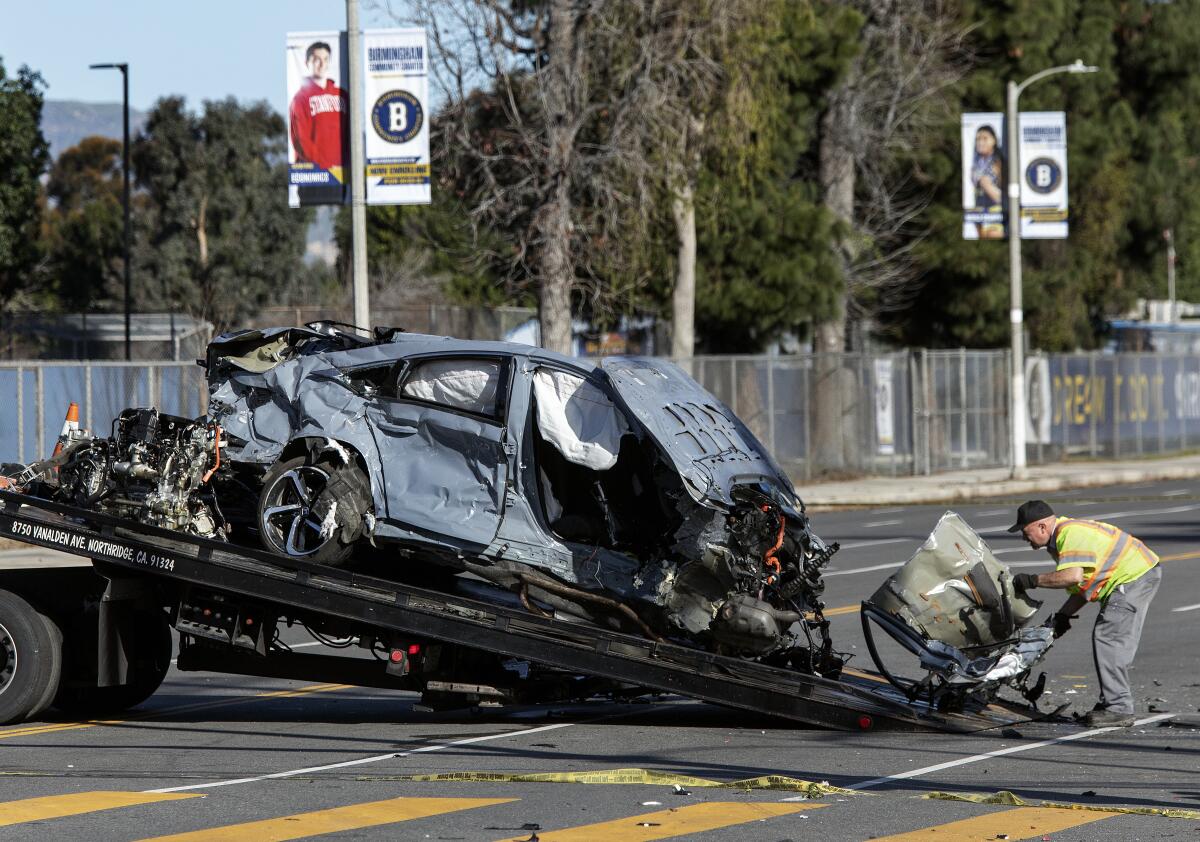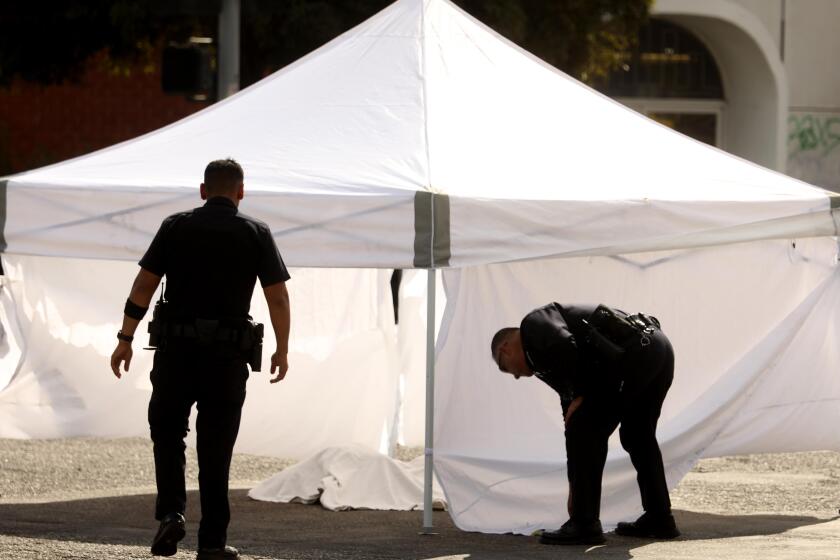Traffic scofflaws, beware: Speed cameras will go up next year in Los Angeles, Glendale, Long Beach

- Share via
Speeders better slow down on city streets. Automated speed cameras will capture violations later this year throughout Los Angeles, Glendale and Long Beach in a bid to curb the alarming rise of fatal car crashes, in which velocity is often a factor.
A new law principally written by Assemblywoman Laura Friedman (D-Glendale) and signed into law by Gov. Gavin Newsom this year allows the three Southern California cities, along with Oakland, San Jose and San Francisco, to run the five-year camera pilot program around schools, high injury networks — streets with the highest rates of injury and death — and areas known as street-racing corridors.
Gruesome collisions have killed more people than nonvehicle homicides in Los Angeles this year, Police Department statistics show. As of Dec. 23, there have been 321 vehicle-related deaths and 323 total homicides, including some of the deaths caused by drivers. Advocates have long argued that street infrastructure such as wide streets made only for cars encourage speed, and that many deaths can be prevented with better enforcement.
“The faster they can get this implemented, the faster we are gonna start saving lives,” said Damian Kevitt, executive director of Streets Are for Everyone, an advocacy group in Los Angeles that supported the legislation. “We know that speed cameras save lives, they are effective tools at reducing serious injuries and fatalities.”
Among those killed this year were 13-year-old Chris Amaya-Pineda and his 2-year-old brother, Damian, after a motorist sped through a red light on Main Street in South Los Angeles in January. In October, along the same street and a block away, 15-year-old Felipe Manuel Infante-Avalos was in the crosswalk at East 110th and Main streets on his way home from school when he was killed by a motorist.
In Malibu that month, four Pepperdine University students were killed by a driver going 104 mph. And on Thanksgiving, a driver suspected of being drunk and traveling more than 100 mph hit a car with three women inside, killing a 24-year-old single mother — one of three people killed by speeding or inebriated drivers in South L.A. on that day alone.
“There are many communities that are clamoring for this because you know, their roads are high injury, high speed, death traps, and they want these cameras. They want something that will help save lives,” Kevitt said.
A 66-year-old Compton man is accused of running over a bicyclist in South L.A. and dragging him for roughly a mile, killing him.
The cameras will be set up to capture license plates, and tickets will be sent to registered vehicle owners. For the first two months, owners will receive warnings. After that, they will receive a warning if their first violation is 11 to 15 mph over the speed limit. Above that threshold, they will be fined progressively steeper depending on the speed, rising to $500 for going more than 100 mph. Violations for speeding 11 to 15 mph over the limit — after the initial warning — will cost $50. The revenue collected is supposed to be reinvested in the city to make streets safer.
For the record:
3:06 p.m. Jan. 2, 2024An earlier version of this article said that tickets for speeding violations caught on automated speed cameras will be issued to drivers. Tickets will be issued to registered vehicle owners, who could be a different person than the driver.
L.A. transportation officials are expected to recommend 125 locations for the speed cameras early next year, along with their policy, budget and design.
Before the cameras go up, the new law requires that cities create a policy that outlines what data can be collected, who can access it and how long it’s retained. There is also a public review process.
“This program is about slowing traffic down and saving lives,” Friedman said. “New York’s program, once instituted, saw a 70% reduction in traffic injuries and fatalities in high speed corridors.”
More to Read
Sign up for Essential California
The most important California stories and recommendations in your inbox every morning.
You may occasionally receive promotional content from the Los Angeles Times.












